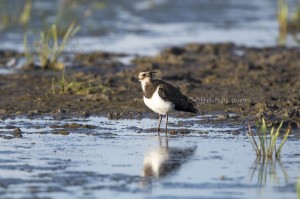 The Wadden Sea is considered one of the last semi-natural landscapes in Central Europe. The Wadden Sea is the largest unbroken system of intertidal sand and mud flats in the world, with natural processes undisturbed throughout most of the area. It stretches from Denmark, over Germany to Netherlands over more than 1,100,000 ha and encompasses a multitude of transitional zones between land, the sea and freshwater environment,
The Wadden Sea is considered one of the last semi-natural landscapes in Central Europe. The Wadden Sea is the largest unbroken system of intertidal sand and mud flats in the world, with natural processes undisturbed throughout most of the area. It stretches from Denmark, over Germany to Netherlands over more than 1,100,000 ha and encompasses a multitude of transitional zones between land, the sea and freshwater environment,
The mixture of extreme living space, impetuous dynamics, endless expanse and silence fascinate every visitor. The Wadden Sea is a coastal landscape of unprecedented size and diversity. Like no other ecosystem, the Wadden Sea is changing its face every day. It has land and sea character at the same time. Wind and waves constantly model its surface.
The Wadden Sea is exposed to only minor river influences. Highly dynamic natural processes are therefore not interrupted in the majority of the watts, creating a variety of barrier islands, canals, sand plains, tufts, salt marshes and other coastal elements.
And like no other ecosystem, the Wadden Sea can change its color. Watt puddles suddenly glow golden in the glow of the setting sun. The colors of the still wet waddle change from yellow to orange to red. The evening mood in the Sandwatt near Föhr can have blue-violet tones. Finally, intense blues announce the oncoming darkness.
Obtaining photogenic aspects from the Wadden Sea seems to be a domain of landscape photographers. But for many birds, the Wadden Sea has much more to offer than just an idyllic landscape among many. The Wadden Sea is a food and rest place in one. Millions of migratory birds rest twice a year, in the spring and autumn, in the nutritious Wadden Sea to recharge their batteries. They are on the long way to the breeding grounds in the far north or the winter quarters in the southern hemisphere. Migratory birds in the Wadden Sea have to gain weight quickly in a short time, so that they can survive unscathed the distances – often thousands of kilometers. Because nowhere else on the migration routes there is an area with comparable food wealth. On arrival in the breeding area in the spring, the birds must also be powerful enough to search for and defend a breeding site, to mate, to lay eggs and finally to raise their young. The importance The Wadden Sea is not only in the context of the East Atlantic Flyway but also in the critical role it plays in the conservation of African-Eurasian migratory waterbirds. In the Wadden Sea up to 6.1 million birds can be present at the same time, and an average of 10-12 million pass through it each year.
However, residents or transitional guests of the Wadden Sea have to be flexible. This is not easy for everyone, because the Wadden Sea is flooded twice a day.
Countless breeding and migratory birds find a suitable habitat in the wide mudflats. Terns, Pied Avocets (Recurvirostra avosetta), Common Redshanks (Tringa tetanus), Brant (Branta bernicla), Common Ringed Plovers (Charadrius hiaticula), Greylag Goose (Anser anser) and many other waterfowl can be found there. The Eurasian Oystercatcher (Haematopus ostralegus) and the Northern Lapwing (Vanellus vanellus) breed in the meadows of the Wadden Sea islands. The Redshanks loudly call from their perches on the fence post along the salt marshes.
To cope with the growing demand for top shots of the rarer species of the Palearctic Bird-Lens is keen to enrich the range of pictures of birds you can find in the western palearctic. Trips to remote places like this one to capture images not only of rare birds of western palearctic were very successful. The nice image of the blog is only a first impression, what you will find in the gallery in the “Picture Shop” very soon. Just give bird-lens.com a message, if bird-lens.com could serve you with an image needed before the new pictures are online.